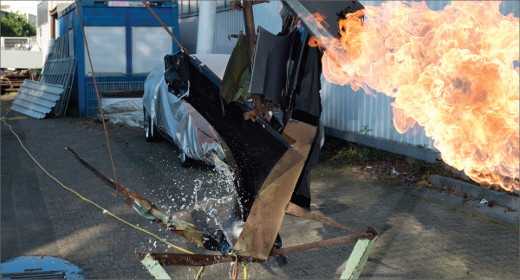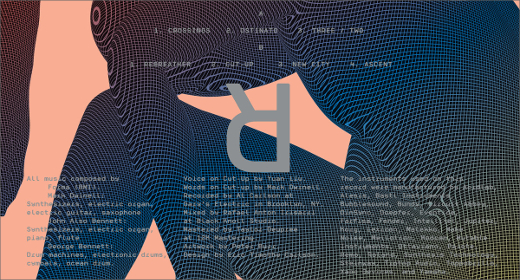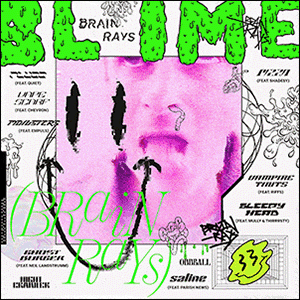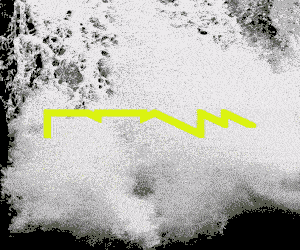Other listeners have remarked how the album is perfect accompaniment to early evening or night, but it sounds to this listener as though it would be the only appropriate soundtrack for a cyclonic wind; the type that threatens to blast you off your feet and sweep you into sky unless you plant your feet with all of your collective weight.
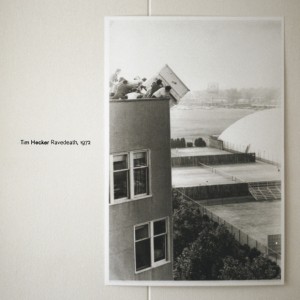
[Listen & Purchase] Tim Hecker’s latest on the ever-reliable Kranky, Ravedeath 1972, is a solid and characteristically evocative release, focusing again on texture and static melody. The project was primarily recorded in only one day in July 2010 in an Icelandic church with the assistance of Ben Frost, who acted as part engineer and part contributor. The primary sound source for the recording apparently is a pipe organ, which one imagines could have cast something of a cloy mood over proceedings had it been treated with less restraint.
Thankfully Hecker’s singular and demonstrable talent in post-production, where he extracts the visceral from the sedate, means the overall sound is never less than affecting. Like Taishi Kamiya’s recent “Spectra of Air” (where the sound of saxophone was manipulated to the point of being almost unidentifiable), the central element of the record often becomes secondary to the sound design and you often forget in what manner it was created to start with.
Moments where the pipe organ is obviously and deliberately identifiable in the foreground are few. Instead, the tone becomes a texture, mixed with multiple layers of static and languid looped melody. Although still ever-present, it’s not always perceived as such. Occasional studio noise in the tail end of some of the tracks, possibly the clatter of the organ’s wind system, adds to the character of the record and gives it an tactile organic edge to grab as you surface from the subterranean depths some tracks dive to. As the manipulated tones are used throughout the record, there’s continuity from beginning to end. There are three suites on the record (“In The Fog,” “Hatred of Music” and “In The Air”), all consisting of one to three part movements, and there are also two songs linked by title and number to the title (“Analog Paralysis, 1978” and “Studio Suicide, 1980”), giving the album a consistent arc and thematic unity.
A number of recognizable patterns and moods emerge over repeated listens, but the overarching statement remains enigmatic and the album will remain a course for the listener to chart on their own. It’s pleasant for one to not feel led by the hand everywhere, constantly enduring the plot points explained in glaring detail at every turn. The sound design has a singular brash confidence to it, characteristic of works by Chris Abrahams and Erik K. Skodvin in different areas of the same field.
As the layers are mixed in a very spirited and dynamic way, the piece as a whole has an energy and heft that ambient music often lacks. Other listeners have remarked how the album is perfect accompaniment to early evening or night, but it sounds to this listener as though it would be the only appropriate soundtrack for a cyclonic wind; the type that threatens to blast you off your feet and sweep you into sky unless you plant your feet with all of your collective weight.
Listeners of Hecker’s will be pleased to hear his recent work qualifies as meteorologically malevolent, and those experiencing it for the first time may want to tie anything loose down before going into it for the first time. An atmospheric event highly recommended.
Ravedeath, 1972 is out now on Kranky. [Listen & Purchase]
[audio:http://igloomag.com/wp/wp-content/uploads/2011/01/Tim-Hecker_Hatred-of-Music-I.mp3|titles=Tim Hecker “Hatred of Music I”]









